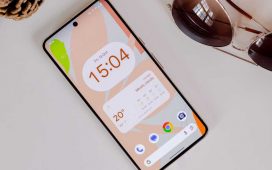Apple Arcade, which launched this Thursday, seems absolutely wonderful so far. We’re going to be digging into the games next week, but so far Grindstone by Capy seems like a puzzler for the ages, a gory spin on Twofold Inc that gives me the distinct sense that someone, somewhere, is getting bloody revenge on the development of Below. Equally, Mini Motorways is taking my Mini Metro brain and turning it inside out: everything’s so similar, but so completely different. It’s glorious.
Every few minutes I fire up a new game and am delighted by something quirky and clever. It’s been enough to make me say things like, oh man, iOS is so good again! And then I stop and listen to what I’ve just said and realise what an idiot I am.
I’ve been playing iOS games from the very start, and even now I probably play on my phone as much as I play on the PC or various consoles. A lot of this time is spent returning to classics, certainly. I still have Drop7 going, even if I have to delete it every now and then for productivity reasons, and Clash Royale is probably the first service game where I’ve ever reached the actual endgame content. It’s a beauty: generous and smart and thrilling.
But there are hundreds of other games too. Stuff I download for fifteen minutes and end up playing for days, stuff I tinker with and can’t quite get into, even though I suspect there’s something brilliant there. Over the last few years Apple, which originally seemed slightly embarrassed by games on the iOS store, has really learned how to talk about them. The iOS store pages are filled with great suggestions and lovely brisk editorial. They point me in the direction of the good stuff as much as friends and colleagues do.
I’m talking about iOS because I’m an iPhone owner. I know this stuff is equally true for Android. In amongst the terrible time-wasters and the money grabbers are absolute delights. And what Apple Arcade has made me realise more than anything is that there is one reason this stuff works: developers have made it work.
The iPhone is a really odd games device. It’s sort of hard to remember this now, in an era when so many games have mastered it and provided a grammar for others to follow. But clear your mind and look at it: touchscreen, no buttons or sticks, haptic feedback and tilt but no triggers.
A lot of the first games on the store really struggled with this. There was a rush of games, in my mind at least, that were cluttered with all kinds of virtual buttons and joysticks. But over time people discovered things. Autorunners like Canabalt proved you could take a lot of control away from the player but still give them meaningful stuff to do. The pinch and the swipe started to take over. Games slowly began to work with the grain of the wood on smartphones.
It’s been brilliant to watch. And it’s all happened without the thing that a lot of game designers over the years have been able to rely on. Not buttons, but a first party that guides the way. Smartphones feel like a platform where the grammar has come straight from the sharp end of development.
(I should acknowledge here that we have not written about smartphone gaming as much as we should have over the years, and I take responsibility for that. We have been missing out big time.)
So yes, Apple Arcade is brilliant. I’m loving it so far, even if I worry about what happens to the games and designers left outside of its walled garden, and I worry about Apple retaining its interest over the long-term. And it’s brilliant because game developers have made it brilliant – not just in the initial line-up, but with years of making this strange, unlikely series of devices really sing.












